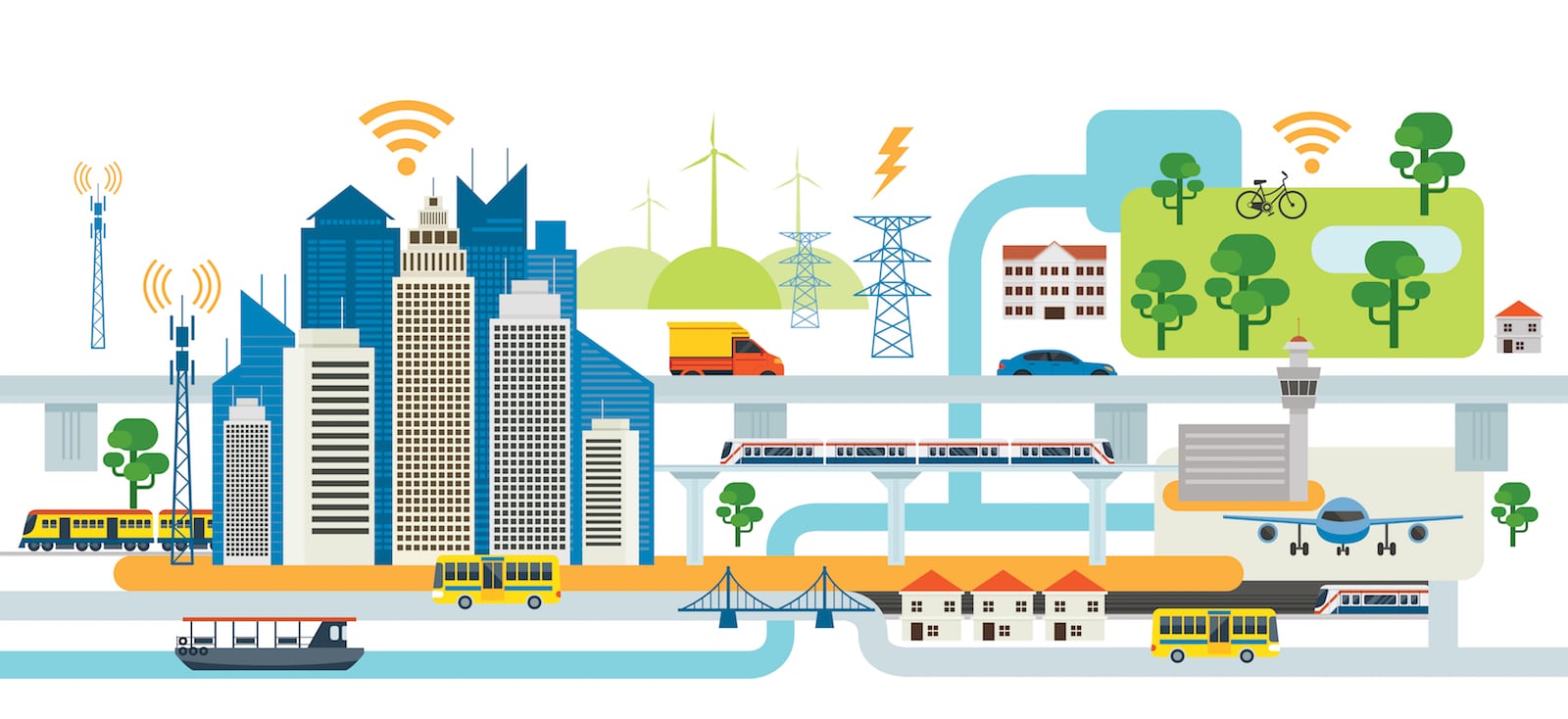"microgrid"

The Threat to Microgrid Momentum
In this historic hurricane season, the fragility of existing energy infrastructure is on full display. One bright spot in all the coverage of Hurricane Harvey in Houston was that the microgrid equipped H.E.B. Grocery chain of stores kept its shops open and served the public, while power outages kept competitors closed.
Each such microgrid success is getting deserved attention and inspiring imitation, creating the momentum needed to transform the nation’s electric power grid into a more resilient, more distributed energy system – sooner rather than later. But, Adam Maher Senior VP of CleanSpark sees a threat to this momentum in the overselling of any one type of distributed energy resource (DER).
Maher says, “Many in the market seem to be missing the whole picture when designing a strategy to profit from the energy transformation in process right now. There is a trend to put one energy resource behind one meter and call the job done. Solar plus battery storage is a powerful combination, for example. It represents free energy and should be a component in any microgrid strategy. But, only when free energy is combined with a controls strategy that also makes the most of software analytics and your existing utility relationship will you be able to maximize financial returns.”
“A corporate campus, REIT, shopping center or other commercial / industrial property concern that wants to invest in its own power-plant capabilities should take a technology-agnostic approach to finding the best mix of clean, renewable energy sources and energy management software. Your microgrid needs to be designed around your unique buildings, your business, your load profile, and the way utilities operate in your part of the country.”
In this trend toward entering long-term contracts with a single DER provider, such as a storage-as-a-service vendor, property owners could cut themselves off from the full potential power and savings of a microgrid.
Maher continues: “Consider the approach taken by Google (Alphabet), Apple, Microsoft, Amazon and Facebook as they pursue the goal of using 100% clean energy. They are not only microgrid operators, some are forming energy subsidiaries inside their companies. Driven by their charter to defend the country, military microgrid operators are even farther ahead in terms of orchestrating their multiple clean-energy power plants with projects like the FractalGrid at Camp Pendleton. Both big data and military campuses have dynamic, upper-hand relationships with local utilities. They are changing the energy landscape for other microgrid operators; but, you need to be in that class to be positioned to make similar energy cost management, sustainability, predictability and resiliency gains.”
Achieving the best microgrid configuration and the fastest payback starts with the project team objectively evaluating all potential production options – solar, wind, diesel, etc. – and financially modeling their long-term performance. Financing options, state and local programs, recurring maintenance costs and performance degradation should all be taken into account.
Maher explains, “At CleanSpark, we start our microgrid design and engineering projects by hacking the existing utility bill, finding all the ways to attack energy costs and to beat the utility at its own game of rate structures and energy supply and demand. We were early to the microgrid market after years of working behind the scenes on military microgrids. We have software to evaluate thousands of scenarios and algorithmically model the best payback. Then we tell the customer what they should build, i.e. what distributed energy resources (DERs) to include in their microgrid and in what priority.”

CleanSpark has some projects in its portfolio that validate the approach Maher describes. A microgrid it designed and helped to build for a shopping mall in California is on course to pay back the investment capital in under seven years, even without significant state or utility-sponsored incentives. In doing this plan, they started by modeling its future microgrid using real performance data from the actual shopping center, not by plugging pro forma data into predictive models. The team collected a years-worth of energy data, recording usage at 15-min intervals. With this, they had a detailed picture of the mall’s energy load profile from the outset, knowing the peak times and time-of-use charges that had been applied in the past.
“Once we installed the mix of DERs to match that profile and integrated our FlexPower system to control and optimize energy consumption, the mall was on its way to achieving its goal of a microgrid that could deliver 100% renewable energy,” Maher explains.
“Customers that buy energy-as-a-service from a single vendor before they do the economic modeling are not positioned for similar success. They can do programmatic peak shaving and demand response as intended and, in some cases, they can also sell energy back to their utility when they over-produce. But, some are already finding that the payback of having one resource behind one meter is falling short of their ROI goals and limiting their options for microgrid growth and flexibility. About 85% of the energy storage customers we’ve asked express to us that they now see that the one-resource approach was wrong. But they say ‘What can we do? We’ve already bought into a long-term contract.’”
The 2017 hurricane season is teaching us that energy resiliency should be on everyone’s mind. An appropriate response would be for more institutional campuses and commercial / retail complexes to become their own microgrid operators. Along the way, they should be wary of aggressive sales pitches for partial solutions.
Just adding solar-plus-battery from a single vendor, won’t get you to energy resilience. In a market as complex as the commercial / retail world, don’t count on ‘one-resource-behind-one-meter’ even moving the dial when it comes to improving Net Operating Income through energy savings. The only way to meet NOI goals in normal times and resiliency at the moment of a disaster is to orchestrate the best mix of assets and technologies into a financially programmable microgrid.
[contact-form-7 id=”3204″ title=”memoori-newsletter”]
World Forum to Examine Latest Microgrid Advances and Opportunities
…Microgrid Development And Lessons Learned Utility-Scale Applications of Microgrids Key Microgrid Initiatives Around the World Operational Realities of a Large Office/ Research Campus Microgrid Microgrid Operations, Safety, Economics, and Policy…

Microgrid Growth Potential Stimulates the Energy Storage Industry
Projections suggest that microgrids are set for exceptional growth in the coming years, alerting the related energy storage and renewable energy industries. However, questions still hang over microgrids potential to…

Return Of The Microgrid… Again
…storage and renewable energy industries. However, questions still hang over microgrids potential to out value conventional grids in major markets,” we said in an article back in 2015 entitled ‘Microgrid…

Industry is Poised to Install Microgrids Faster Than Any Other Sector
…there becomes potential for robust microgrids almost anywhere in the world. For industrial customers, in the widest sense, microgrids offer a range of benefits beyond simply “going green.” “A microgrid…

Development of the IoT and MicroGrids Fuel each others Expansion
…of microgrids to operate autonomously from larger grids could prove to be a major driver of Internet of Things (IoT) adoption in smart cities of the future. “Highly instrumented microgrids…

Johnson Controls could Shed Automotive in Favour of Smart Building Controls and Energy Storage
…Advanced Microgrid Solutions, a provider of energy-storage systems, agreed to buy as much as 500 megawatt-hours of battery capacity from Tesla. About 40% of that order will be used in…

Smart Building Innovators Lead in Global Cleantech
…Intelligent Software. Companies highlighted by Cleantech include Green Charge Networks, Sunverge Energy, Advanced Microgrid Solutions and Stem. Advanced Microgrid Solutions (USA) specializes in the creation of “hybrid electric buildings,” office…
